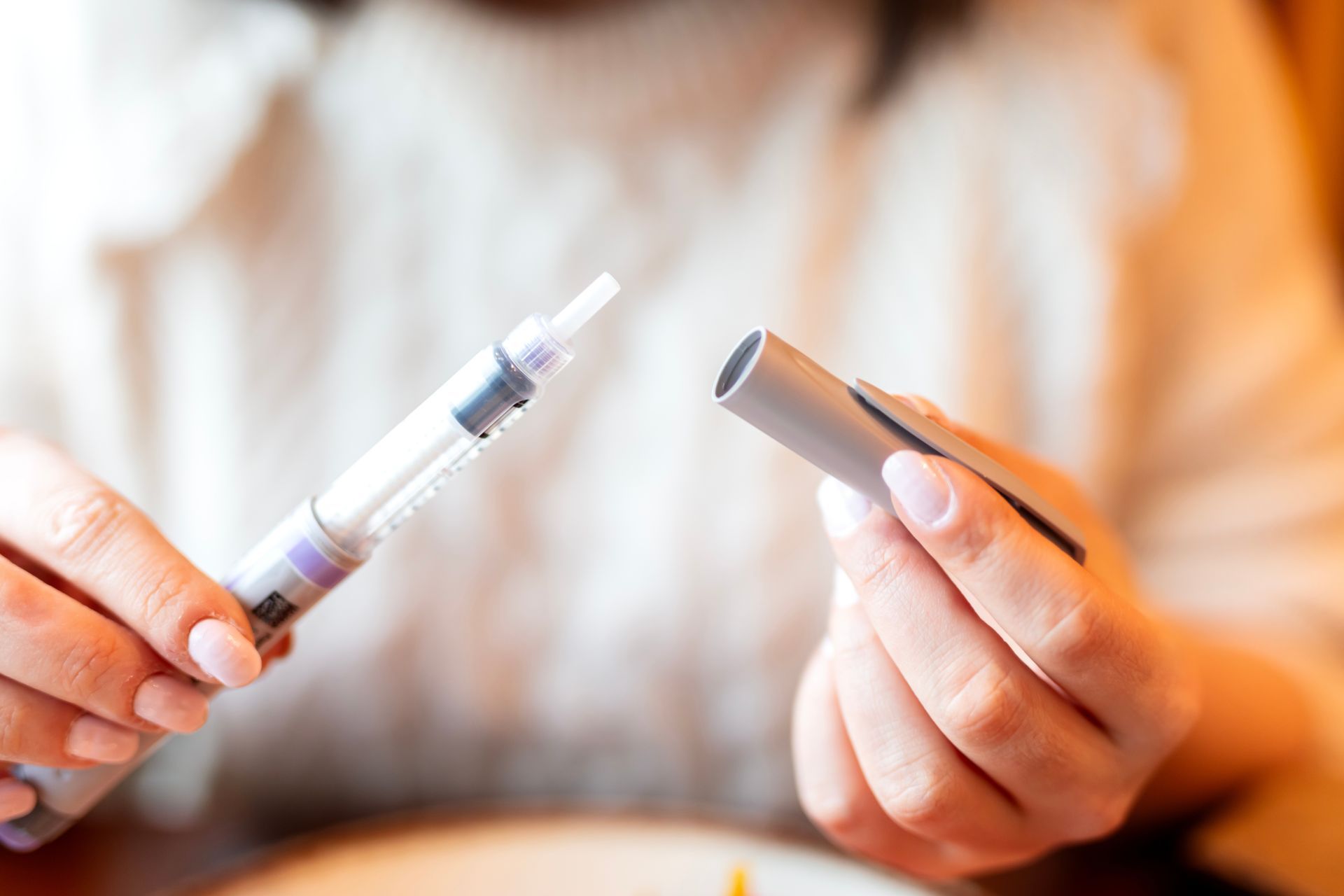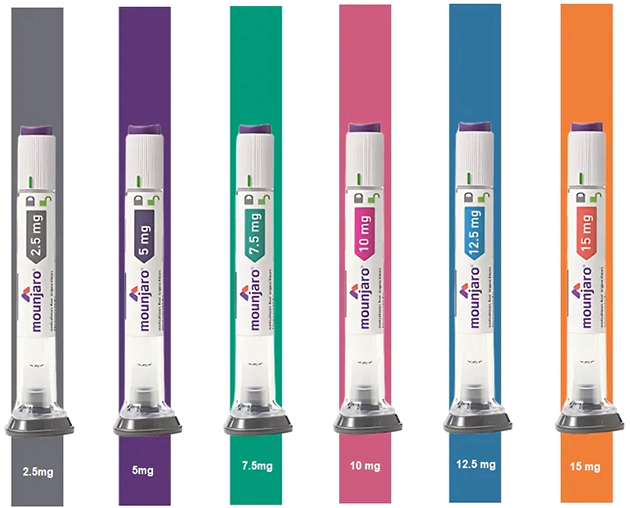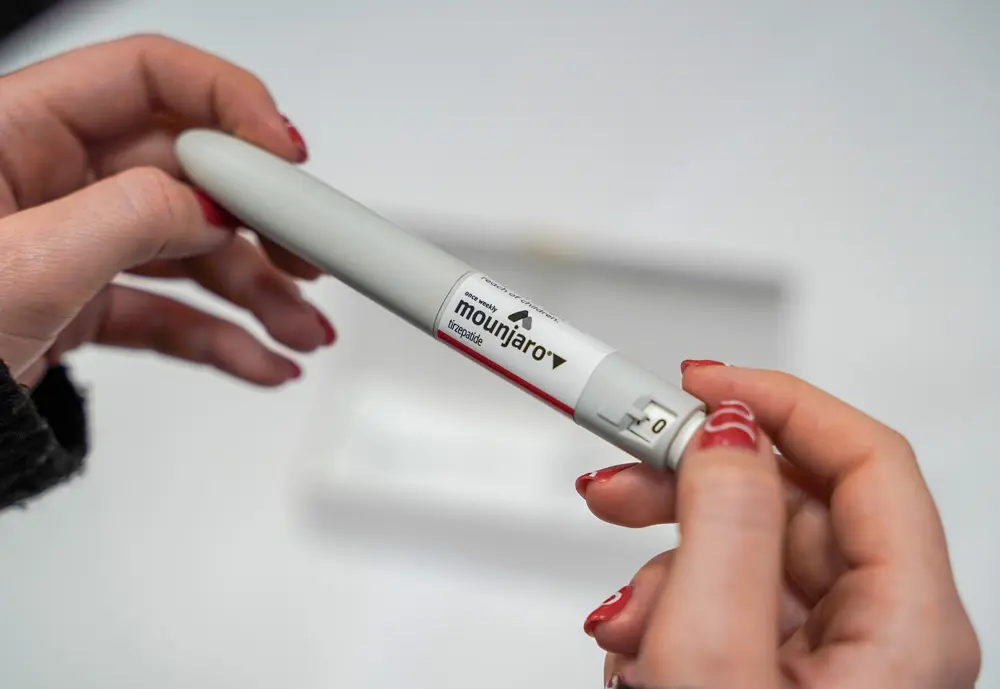There’s a global race to tackle obesity—and one American pharmaceutical company just took a big step forward.
Eli Lilly, a US-based pharma giant, has launched its popular diabetes and weight loss drug, Mounjaro, in new international markets.
Originally approved in the United States in 2022 for type 2 diabetes, Mounjaro is now gaining attention worldwide for a different reason—rapid weight loss.
But what exactly is Mounjaro? How does it work? And why is it suddenly a hot topic in countries around the world?
Let’s break it down.
What is Mounjaro?
Mounjaro is an injectable medicine developed by Eli Lilly. It was first approved by the U.S. FDA to treat type 2 diabetes.
But doctors and patients quickly noticed something else: it helped people lose a lot of weight—and fast.
This is why Mounjaro is now being used off-label (and in some cases officially approved) as a weight loss drug in many countries.

How quickly does mounjaro work for weight loss?
Mounjaro (tirzepatide) works by targeting two hormones in your body—GIP (glucose-dependent insulinotropic polypeptide) and GLP-1 (glucagon-like peptide-1).
These hormones naturally occur in your gut and play a key role in how your body responds to food.
Here’s how Mounjaro helps people lose weight:
1. Suppresses Appetite
Mounjaro signals to your brain that you’re full—even if you’ve eaten less food.
This reduces the urge to snack or overeat.
2. Slows Gastric Emptying
It slows down how quickly your stomach empties food into your small intestine.
This keeps you feeling full for longer periods and naturally reduces your calorie intake throughout the day.
3. Improves Insulin Sensitivity
By mimicking GIP and GLP-1, Mounjaro helps your body produce more insulin when it’s needed, especially after meals.
This controls blood sugar spikes and prevents fat storage caused by excess glucose.
4. Reduces Cravings
Some users report a noticeable drop in cravings—especially for sugary or high-fat foods—making it easier to stick to healthier eating habits.
5. Targets Belly Fat
Early studies and real-world use suggest that Mounjaro may be especially effective in reducing visceral fat, the stubborn fat around your belly that’s linked to serious health risks.
In clinical trials, some patients lost up to 20% of their body weight over several months—a significant result that rivals even bariatric surgery outcomes in some cases.
Clinical Note: Mounjaro is still primarily approved for type 2 diabetes, but doctors are increasingly prescribing it “off-label” for weight loss due to its strong results.
Rules Before You Start Using Mounjaro
Before jumping on the Mounjaro train, here are a few essential rules to follow to ensure the best results and fewer side effects:
1. Stay Hydrated—But Make It Exciting
Dehydration is your worst enemy on Mounjaro.
Because the drug suppresses appetite, you’ll likely feel less hungry and less thirsty, which can cause serious issues:
- Constipation
- Bloating
- Sluggishness
- Low energy
Here’s a hydration hack:
Drop a cinnamon stick into your water bottle, leave it in the fridge overnight, and enjoy!
This refreshing, slightly sweet drink not only keeps you hydrated—it may also help regulate appetite and hormones.
Tip: Try infusing water with lemon, mint, or berries to make staying hydrated feel fun—not forced.
2. Follow a Doctor’s Advice
Mounjaro is not an over-the-counter product.
You’ll need a prescription, and it’s crucial to have your dosage monitored over time, especially if you’re taking it for weight loss and not diabetes.
Also Read: Oatmeal Ozempic Weight Loss
3. Be Patient with Side Effects
In the first few weeks, you might feel:
- Nausea
- Fatigue
- Changes in bowel movements
This is normal for many users and tends to fade as your body adjusts.
Don’t panic, but don’t ignore persistent symptoms either—talk to your doctor.
4. Focus on a Balanced Lifestyle
Mounjaro is a tool—not a magic fix.
Eating well, moving your body, sleeping enough, and managing stress will still play a major role in your success.
How to Use Mounjaro for Weight Loss
Mounjaro is a weekly injection that helps with weight loss and type 2 diabetes.
Don’t worry, it sounds scarier than it actually is — once you’ve done it once or twice, it becomes routine.
Here’s how to use it properly and safely.
Step 1: Start with the Right Dose
Most people begin with 2.5 mg once a week, and then gradually increase the dose (if needed) under a doctor’s guidance.
The common progression is:
2.5 mg → 5 mg → 7.5 mg → 10 mg → 12.5 mg → 15 mg
You should only increase your dose as recommended by your doctor.

Step 2: Clean Up and Get Ready
- Wash your hands with soap and water.
- Grab your supplies:
- Your Mounjaro pen
- A new needle
- Alcohol swab
- Sharps container (for safe disposal)

Step 3: Attach the Needle
- Remove the cap from the Mounjaro pen.
- Check the dose and expiration date on the pen.
- Wipe the rubber seal with an alcohol swab.
- Peel the foil from the needle and twist it onto the pen.
- Remove both needle caps (the outer and inner layers).
Now, prime the pen by turning the dial until you hear two clicks.
Press the button gently — if a drop comes out, it’s ready!
Also Read: Wegovy for Weight Loss
Step 4: Choose the best place to Inject the mounjaro
You can inject into:
- Your thigh
- Your abdomen (belly, but avoid 2 inches around your belly button)
- The back of your upper arm (you may need help with this spot)
Clean the area with an alcohol swab and let it dry.

Step 5: Inject the Medication
- Turn the pen’s dial to your dose (it will lock once it’s ready).
- Place the pen firmly on your skin at a 90° angle.
- Press the button and hold it for a few seconds until the medicine is fully in.
- Remove the pen and check the site — a small drop of medicine or slight redness is normal.
Step 6: Clean Up
- Use the cap to safely remove the needle and put it in a sharps container.
- Put the cap back on the pen.
- Store the pen at room temperature if already used — otherwise, keep unused pens in the fridge (between 2–8°C).
Some Helpful Tips
- Expect mild side effects like nausea or low appetite — that’s part of how Mounjaro works.
- Stay hydrated! Dehydration can sneak up on you since you feel less hungry and less thirsty. Try flavoring your water — like adding a cinnamon stick overnight — to make drinking water more enjoyable.
- Use a demo pen if available before trying your real one. It’s a great way to practice.
Common Side Effects of Mounjaro
Like most medications, Mounjaro may cause side effects, especially when first starting or increasing the dose.
These usually become milder over time.
Mild to Moderate Side Effects:
- Nausea
- Constipation or diarrhea
- Upset stomach
- Bloating or gas
- Loss of appetite
- Feeling tired
- Injection site irritation (redness or swelling)
Less Common but Serious Side Effects:
- Inflammation of the pancreas (pancreatitis)
- Gallbladder problems
- Low blood sugar (especially if combined with other diabetes medications)
- Allergic reactions
If you experience severe stomach pain, vomiting, yellowing of the skin or eyes, or signs of an allergic reaction (such as swelling or difficulty breathing), seek medical help immediately.
Also Read: Lemon Balm for Weight Loss
FAQs
How much weight can you lose on Mounjaro in a month?
Weight loss results vary by person, but many people lose about 5 to 10 pounds (2 to 4.5 kg) in the first month.
Clinical trials have shown average weight loss of 15% to 20% of body weight over a period of 12 to 18 months when combined with healthy eating and physical activity.
How long do you stay on Mounjaro for weight loss?
There is no fixed timeline.
Some people use Mounjaro for several months, while others may continue for a year or more.
The duration depends on individual goals, progress, and how well the body responds.
Your healthcare provider will guide you based on your needs and overall health.
Is Mounjaro safe for weight loss?
Mounjaro has been shown to be safe and effective for many people when used under medical supervision.
However, it is not recommended for:
- People with a personal or family history of medullary thyroid cancer
- Those with multiple endocrine neoplasia syndrome type 2 (MEN 2)
- Pregnant or breastfeeding women
Before starting, your doctor will assess whether it is the right choice for you.
Which is better for weight loss: Ozempic or Mounjaro?
Both Ozempic (semaglutide) and Mounjaro (tirzepatide) are GLP-1-based medications that help with weight loss.
However, Mounjaro also targets a second hormone (GIP), which may offer greater appetite control and more weight loss.
- Mounjaro users lost up to 21% of their body weight
- Ozempic users lost about 15%
The best option depends on your individual response, health status, and insurance coverage.
Your healthcare provider can help determine the most suitable medication for your situation.
How do I get Mounjaro for weight loss?
To get Mounjaro for weight loss, you must first consult a licensed healthcare provider.
The process usually involves:
✓ Medical Evaluation: Your doctor will assess your weight, medical history, and overall health to determine if Mounjaro is appropriate for you.
✓ Prescription: If approved, your doctor will write a prescription. Mounjaro is a prescription-only medication and cannot be purchased over the counter.
✓ Pharmacy Pickup or Delivery: The prescription can be filled at a local pharmacy or through a mail-order pharmacy service, depending on your insurance or location.
✓ Online Telehealth Services: In some countries, online platforms offer virtual weight-loss programs with access to Mounjaro, provided a medical professional confirms you meet the requirements.
Note: Some providers may only prescribe Mounjaro for diabetes, so you may need to find a specialist familiar with its off-label use for weight loss.
What insurance covers Mounjaro for weight loss?
Most insurance plans cover Mounjaro only for type 2 diabetes since that is what it is officially approved for by the U.S. FDA.
Coverage for weight loss (off-label use) may be limited.
Please contact your health insurance provider directly to ask if Mounjaro is covered for weight loss or obesity.
Is Mounjaro approved for weight loss?
No. As of the time of this writing, Mounjaro (tirzepatide) is officially approved by the U.S. FDA for the treatment of type 2 diabetes, not specifically for weight loss.
That said, Zepbound, a brand name for tirzepatide (the same active ingredient in Mounjaro), was FDA-approved for chronic weight loss in adults with obesity or overweight and at least one weight-related health condition (such as high blood pressure, type 2 diabetes, or high cholesterol).
Zepbound is essentially the same medication but marketed specifically for weight loss.
If you’re considering Mounjaro or Zepbound for weight loss, speak with your healthcare provider to determine the best option based on your medical needs and insurance coverage.




